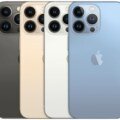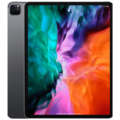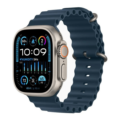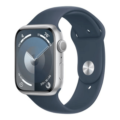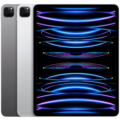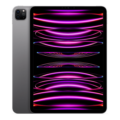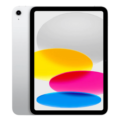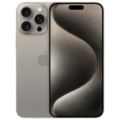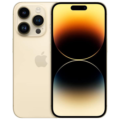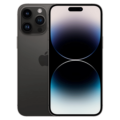- Home
- Apple Devices
- Apple iPad
- Apple iPad Air 2 full specifications
Apple iPad Air 2 full specifications
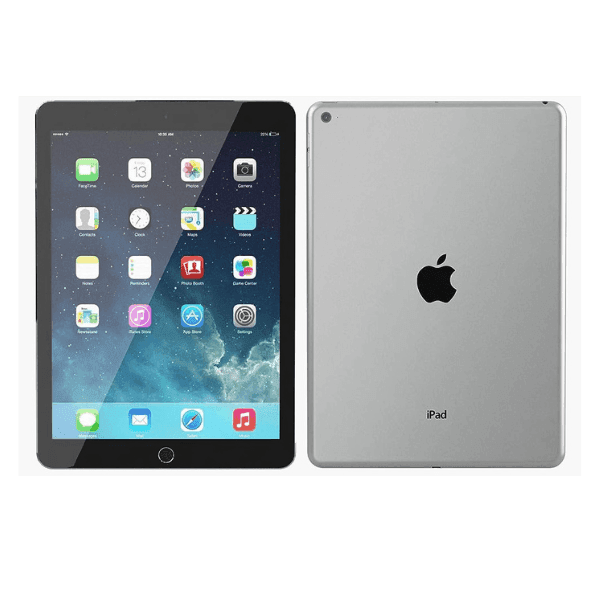
SPECIFICATIONS
General
| Status | Discontinued |
| Announced |
2014, October 16 |
| Released | 24 October, 2014 |
| Model |
A1566, A1567, iPad5,3, iPad5,4 |
| Price Apple iPhone Price in USA, UK, Canada, Australia, India, Pakistan, China, Japan and Europe |
EUR 440 USD 477 |
Network
| Technology |
GSM / CDMA / HSPA / EVDO / LTE |
| 2G Network | GSM 850 / 900 / 1800 / 1900 CDMA 800 / 1900 |
| 3G Network | HSDPA 850 / 900 / 1700 / 1900 / 2100 CDMA2000 1xEV-DO |
| 4G Network | 1, 2, 3, 4, 5, 7, 8, 13, 17, 18, 19, 20, 25, 26, 28, 29, 38, 39, 40, 41 - A1567 |
| Speed | HSPA 42.2/5.76 Mbps, LTE-A Cat4 150/50 Mbps, EV-DO Rev.A 3.1 Mbps |
| GPRS GPRS (General Packet Radio Service) is a packet oriented mobile data service on the 2G and 3G cellular communication system's global system for mobile communications (GSM), Generally, GPRS is used for the purpose of wireless data transfer, such as sharing pictures and videos or browsing the Internet via a mobile phone connection. | |
| EDGE EDGE (Enhanced Data GSM Environment) is a wireless network technology generally considered the next step in the 2G network offers data transfer rates up to four times faster than ordinary GSM networks, Generally, EDGE is used for the purpose of wireless data transfer, such as sharing pictures and videos or browsing the Internet via a mobile phone connection. |
Body
| Dimensions | 240 x 169.5 x 6.1 mm (9.45 x 6.67 x 0.24 in) |
| Weight | 437 g (Wi-Fi) / 444 g (3G/LTE) (15.41 oz) |
| Colors |
Space Gray, Silver, Gold |
| SIM SIM (Subscriber Identity Module) is a small card that contains mobile network subscriber's account information. This allows the phone using the card to attach to a mobile network. The SIM card is most commonly associated with GSM and UMTS mobile networks. Moving a SIM card from one phone to another allows a subscriber to switch mobile phones without having to contact their mobile network carrier. SIM cards can also be used by a phone to store limited amounts of data, such as phone numbers and text messages. |
Nano-SIM and eSIM |
Display
| Display Type Display Technology => A number of display technologies and types used in mobile phones => TFT (Thin Film Transistor), IPS (In-Place Switching), OLED (Organic Light Emitting Diode), AMOLED (Active-Matrix Organic Light-Emitting Diode), Super AMOLED (an even advanced version of AMOLED), Resistive Touchscreen (Resistive touchscreens contain two layer of conductive material with a very small gap between them which acts as a resistance), Capacitive Touchsceen (Capacitive touchscreen technology consists of a layer of glass coated with a transparent conductor) | IPS LCD |
| Size | 9.7 inches, 291.4 cm2 (~71.6% screen-to-body ratio) |
| Resolution | 1536 x 2048 pixels, 4:3 ratio |
| Pixel Density Pixel Density (PPI) is refers to the concentration of pixels on a particular display, measured in pixels per inch (ppi). Pixel density is calculated by dividing the diagonal pixel resolution of a display by its diagonal size, higher pixel density better display quality. | (~264 ppi density) |
| Touch Screen | Haptic Touch |
| Display Protection Display Protection => Gorilla Glass is a special alkali-aluminosilicate glass shield with exceptional damage resistance that helps protect mobile displays from scratches, drops, and bumps of everyday use, It is always better to go for a smartphone with Gorilla Glass for that added protection and peace of mind. | Scratch-resistant glass, oleophobic coating |
| Multitouch |
Camera
| Primary Camera is able to capture photographs and usually videos, The most important characteristics of a camera are the resolution (measured in megapixels), lens focus type (fixed or automatic), higher megapixel cameras are known to capture higher quality photos, but not always a good measurement of the photos quality. |
8 MP, f/2.4, 31mm (standard), 1.12µm, AF |
| Video | 720p@30fps |
| Camera Features |
face detection, HDR, FaceTime over Wi-Fi or Cellular |
| Selfie Camera |
1.2 MP, f/2.2, 31mm (standard) |
| Video | 720p@30fps |
| Camera Features |
face detection, HDR, FaceTime over Wi-Fi or Cellular |
Hardware
| Chipset Chipset is a group of integrated circuits designed to perform one or a more dedicated functions, often with real time computing constraints, Popular smartphones are equipped with more advanced embedded chipsets that can do many different tasks depending on their programming. | Apple A8X (20 nm) |
| CPU CPU (Central Processing Unit) mostly known as processors, CPU processes instructions in order to carry out certain functions that make your device operate properly. Processors are often described as the brain of computers, smartphones and tablets, Smartphones and tablets rely on processors to carry out their every task, Processors are an incredibly important factor in selecting any type of computing device, including your smartphone. | Triple-core 1.5 GHz Typhoon |
| GPU GPU (Graphics Processing Unit) is a single-chip processor designed to rapidly manipulate and alter memory to accelerate the creation of images in a frame buffer intended for output to a display, This includes things such as lighting effects, object transformations, and 3D motion. | PowerVR GXA6850 (octa-core graphics) |
| RAM (Memory) RAM (Random Access Memory) is a type of computer memory that can be accessed randomly, any byte of memory can be accessed without touching the preceding bytes that allows information to be stored and accessed quickly from random locations. RAM is the most common type of memory found in computer systems, smartphones, tablets and other electronic devices. | 2 GB |
| Internal Storage Internal Storage is a data storage space (flash memory) mostly used in smartphones, tablets and other electronic devices where operating system, apps, music, photos, videos, files and other user data Is stored. | 16GB/32GB/64GB/128GB |
| Card Slot Memory Card Slot is a special slot for inserting a memory card. Memory cards allow you to expand the phone's built-in memory, A memory card (sometimes called a flash memory card or a storage card) is a small storage medium used to store data such as text, pictures, audio, and video, for use on small, portable or remote computing devices such as mobile phones, mp3 players, digital cameras. | No |
| Sensors Sensors are electronic components that detects and responds to some type of input from the physical environment. The specific input could be light, heat, motion, moisture, pressure and location, The output is generally a signal that is converted to use in computing systems, a location sensor, such as a GPS receiver is able to detect current location of your electronic device. |
Fingerprint (front-mounted), accelerometer, gyro, compass, barometer |
Software
| Operating System OS => Every computer system run on a base software called Operating System (OS). Operating System controls all basic operations of the computer (such as smartphone, PDAs, tablet computers and other handheld devices). The Operating System allows the user to install and run third party applications (apps), apps are used to add new functionality to the device. | iOS 8.1, upgradable to iPadOS 15.8.1 |
| Browser (Default) | Safari |
Media
| Loudspeaker | Yes, with stereo speakers |
| 3.5mm Jack | |
| FM Radio | No |
Connectivity
| Bluetooth Bluetooth is a wireless communications technology for exchanging data between mobile phones, headsets, computers and other network devices over short distances without wires, Bluetooth technology was primarily designed to support simple wireless networking of personal consumer devices. | 4.0, A2DP, EDR |
| Infrared Infrared connectivity is an old wireless technology used to connect two electronic devices. It uses a beam of infrared light to transmit information and so requires direct line of sight and operates only at close range. | |
| Wi-fi Wi-Fi is a popular wireless networking technology using radio waves to provide high-speed network connections that allows devices to communicate without cords or cables, Wi-Fi is increasingly becoming the preferred mode of internet connectivity all over the world. | 802.11 a/b/g/n/ac, dual-band, hotspot |
| Wi-fi Hotspot | |
| USB | Lightning, USB 2.0 |
| NFC NFC (Near field communication) is a set of standards for smartphones and similar devices to establish peer-to-peer radio communications with each other by touching them together or bringing them into proximity, usually no more than a few inches. |
Battery
| Battery Type Battery Type => Cell phones run on various kinds of batteries depending on the manufacturer, phone size or shape and features. There are basically four types of cell phone batteries => Lithium Polymer, Lithium Ion, Nickel Metal Hydride and Nickel Cadmium. | Li-Po |
| Capacity Battery Capacity is a measure (typically in Amp-hr) of the charge stored by the battery, and is determined by the mass of active material contained in the battery. The battery capacity represents the maximum amount of energy that can be extracted from the battery under certain conditions. | 7340 mAh |
| Placement | Non-removable |
| Wireless Charging Wireless Charging (Inductive Charging) uses an electromagnetic field to transfer energy between two objects. This is usually done with a charging station. Energy is sent through an inductive coupling to an electrical device, which can then use that energy to charge batteries or run the device. | Unknown |
| Fast Charging | Unknown |
| Standby Standby Time is the total amount of time that you can leave your is fully charged, turned on and ready to send and receive calls or data transmissions before completely discharging the battery. | Unknown |
| Talk Time Talk Time is the longest time that a single battery charge will last when you are constantly talking on the phone under perfect conditions, Ambient temperature and highly dependent on the cellular network environment such as the distance to the closest cell network tower. | Up to 10 h (multimedia) |
| Audio Playback | Unknown |
| Video Playback | Unknown |
| Internet Usage | Unknown |
MISC
Description
The Apple iPad Air 2 Spec, released on October 24, 2014, redefined the tablet experience with its sleek design, powerful hardware, and advanced features. Even years after its debut, it remains a popular choice for users seeking a reliable and high-performance device. In this review, we’ll explore the full specifications of the iPad Air 2, providing in-depth insights into its design, performance, camera capabilities, and more.
Table of Contents
Design and Build

The Apple iPad Air 2 Spec features a premium aluminum design that is both lightweight and durable. Measuring just 6.1 mm in thickness and weighing 437 grams (Wi-Fi model), it’s incredibly portable and easy to handle for extended periods. Available in Space Gray, Silver, and Gold, the tablet exudes elegance and sophistication.
Key Design Features
- Ultra-thin body (6.1 mm thickness)
- Glass front with an oleophobic coating for fingerprint resistance
- Aluminum back and frame for durability
- Nano-SIM + eSIM support (cellular models)
Display
The 9.7-inch Retina display is one of the best features of the iPad Air 2. With a resolution of 1536 x 2048 pixels and a pixel density of ~264 PPI, the screen delivers crisp and vibrant visuals. The addition of an anti-reflective coating makes it easier to use outdoors or in bright environments.
Display Highlights
- Retina display with IPS LCD technology
- Scratch-resistant glass for added durability
- Anti-reflective coating for improved visibility
- Fully laminated display, reducing glare and enhancing contrast
Performance

The Apple iPad Air 2 is powered by Apple’s A8X chipset, built on a 20nm process. This triple-core processor clocked at 1.5 GHz, is paired with the PowerVR GXA6850 GPU, delivering smooth performance across apps, games, and multitasking. The 2GB RAM complements the processor, ensuring seamless transitions and reduced lag.
Performance Benchmarks
- Basemark X Score: 29,753
- Excellent multitasking capabilities
- Supports iPadOS 15.8.1, allowing access to modern apps and features
Camera Capabilities

The iPad Air 2’s camera setup may not rival today’s standards but offers impressive performance for its time. The 8MP rear camera supports HDR, autofocus, and 1080p video recording at 30fps, making it suitable for casual photography and video recording.
Rear Camera Features
- 8MP resolution with f/2.4 aperture
- HDR support for improved image quality
- Video recording: 1080p@30fps, 720p@120fps (slo-mo)
- Stereo sound recording
Front Camera Features
- 1.2MP resolution, f/2.2 aperture
- FaceTime support over Wi-Fi or cellular
- HDR and 720p video recording capabilities
Battery Life

The Apple iPad Air 2 Spec houses a 7340mAh Li-Po battery, delivering up to 10 hours of multimedia usage on a single charge. Whether you’re browsing the web, watching videos, or listening to music, the battery performance ensures uninterrupted use throughout the day.
Battery Specifications
- Capacity: 7340mAh (27.62 Wh)
- Charging via USB to computer system or power adapter
- Up to 10 hours of usage on Wi-Fi or cellular networks
Software and Features
Initially shipped with iOS 8.1, the iPad Air 2 can be upgraded to iPadOS 15.8.1, enabling users to access modern features and apps. The addition of Touch ID provides secure authentication and easy payments via Apple Pay.
Notable Features
- Touch ID for biometric security
- Support for Apple Pay
- Dual microphones and stereo speakers for enhanced audio quality
- Bluetooth 4.0 and Wi-Fi 802.11ac for seamless connectivity
Connectivity and Storage Options
The Apple iPad Air 2 Spec offers both Wi-Fi-only and Wi-Fi + Cellular models. The cellular version supports LTE networks, providing fast internet connectivity on the go. Storage options range from 16GB to 128GB, though there’s no microSD slot for expansion.
Storage Variants
- 16GB, 32GB, 64GB, 128GB options
- No expandable storage (microSD slot unavailable)
Audio and Multimedia
Equipped with stereo speakers and a 3.5mm headphone jack, the iPad Air 2 delivers a satisfying audio experience. The dual microphones ensure clear voice recording and FaceTime calls.
Audio Highlights
- Stereo speaker setup
- 3.5mm headphone jack
- Dual microphones for noise reduction
Price and Availability
While the iPad Air 2 is discontinued, it remains available in secondary markets and refurbished stores. Originally priced at around 440 EUR, it now serves as an affordable option for budget-conscious users seeking a reliable tablet.
Final Verdict
The Apple iPad Air 2 Spec combines elegance, performance, and functionality in a compact and lightweight design. While it may lack modern features like USB-C or advanced cameras, its Retina display, A8X chipset, and iPadOS support make it a versatile device even today. Whether you need a tablet for browsing, streaming, or productivity, the iPad Air 2 is a timeless choice.
